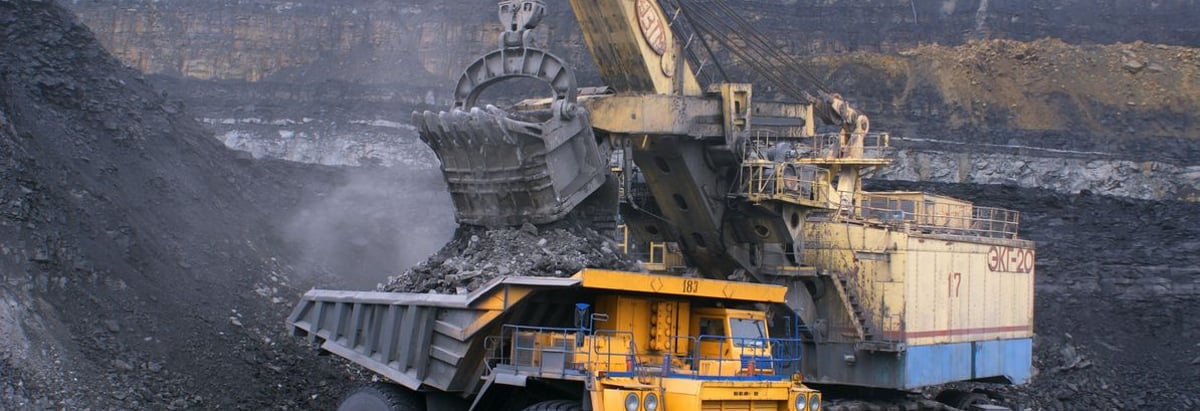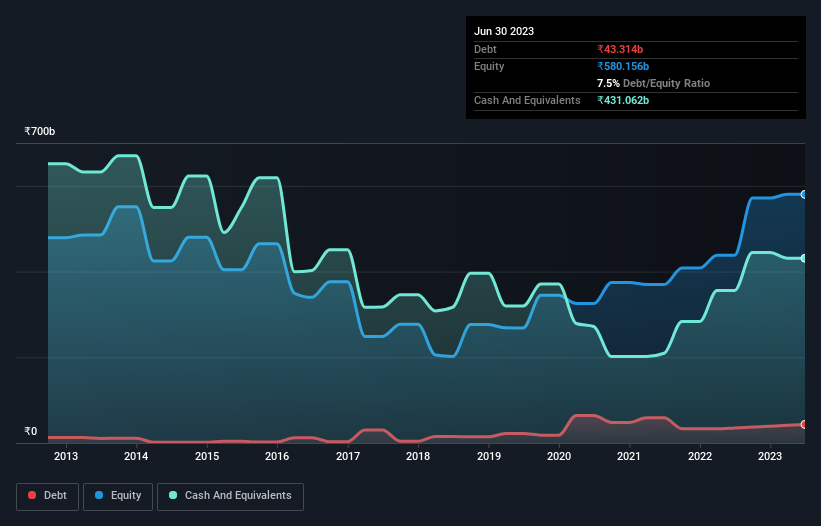- India
- /
- Oil and Gas
- /
- NSEI:COALINDIA
Here's Why Coal India (NSE:COALINDIA) Can Manage Its Debt Responsibly

Legendary fund manager Li Lu (who Charlie Munger backed) once said, 'The biggest investment risk is not the volatility of prices, but whether you will suffer a permanent loss of capital.' So it seems the smart money knows that debt - which is usually involved in bankruptcies - is a very important factor, when you assess how risky a company is. We note that Coal India Limited (NSE:COALINDIA) does have debt on its balance sheet. But the real question is whether this debt is making the company risky.
When Is Debt Dangerous?
Debt and other liabilities become risky for a business when it cannot easily fulfill those obligations, either with free cash flow or by raising capital at an attractive price. Ultimately, if the company can't fulfill its legal obligations to repay debt, shareholders could walk away with nothing. While that is not too common, we often do see indebted companies permanently diluting shareholders because lenders force them to raise capital at a distressed price. By replacing dilution, though, debt can be an extremely good tool for businesses that need capital to invest in growth at high rates of return. When we think about a company's use of debt, we first look at cash and debt together.
See our latest analysis for Coal India
How Much Debt Does Coal India Carry?
You can click the graphic below for the historical numbers, but it shows that as of March 2023 Coal India had ₹43.3b of debt, an increase on ₹35.1b, over one year. But on the other hand it also has ₹431.1b in cash, leading to a ₹387.7b net cash position.

A Look At Coal India's Liabilities
Zooming in on the latest balance sheet data, we can see that Coal India had liabilities of ₹687.3b due within 12 months and liabilities of ₹844.6b due beyond that. Offsetting this, it had ₹431.1b in cash and ₹341.1b in receivables that were due within 12 months. So it has liabilities totalling ₹759.8b more than its cash and near-term receivables, combined.
Coal India has a very large market capitalization of ₹1.42t, so it could very likely raise cash to ameliorate its balance sheet, if the need arose. But it's clear that we should definitely closely examine whether it can manage its debt without dilution. Despite its noteworthy liabilities, Coal India boasts net cash, so it's fair to say it does not have a heavy debt load!
Fortunately, Coal India grew its EBIT by 9.0% in the last year, making that debt load look even more manageable. The balance sheet is clearly the area to focus on when you are analysing debt. But it is future earnings, more than anything, that will determine Coal India's ability to maintain a healthy balance sheet going forward. So if you're focused on the future you can check out this free report showing analyst profit forecasts.
Finally, while the tax-man may adore accounting profits, lenders only accept cold hard cash. While Coal India has net cash on its balance sheet, it's still worth taking a look at its ability to convert earnings before interest and tax (EBIT) to free cash flow, to help us understand how quickly it is building (or eroding) that cash balance. Over the most recent three years, Coal India recorded free cash flow worth 77% of its EBIT, which is around normal, given free cash flow excludes interest and tax. This cold hard cash means it can reduce its debt when it wants to.
Summing Up
Although Coal India's balance sheet isn't particularly strong, due to the total liabilities, it is clearly positive to see that it has net cash of ₹387.7b. And it impressed us with free cash flow of ₹204b, being 77% of its EBIT. So we don't have any problem with Coal India's use of debt. The balance sheet is clearly the area to focus on when you are analysing debt. However, not all investment risk resides within the balance sheet - far from it. To that end, you should learn about the 2 warning signs we've spotted with Coal India (including 1 which is a bit concerning) .
Of course, if you're the type of investor who prefers buying stocks without the burden of debt, then don't hesitate to discover our exclusive list of net cash growth stocks, today.
New: AI Stock Screener & Alerts
Our new AI Stock Screener scans the market every day to uncover opportunities.
• Dividend Powerhouses (3%+ Yield)
• Undervalued Small Caps with Insider Buying
• High growth Tech and AI Companies
Or build your own from over 50 metrics.
Have feedback on this article? Concerned about the content? Get in touch with us directly. Alternatively, email editorial-team (at) simplywallst.com.
This article by Simply Wall St is general in nature. We provide commentary based on historical data and analyst forecasts only using an unbiased methodology and our articles are not intended to be financial advice. It does not constitute a recommendation to buy or sell any stock, and does not take account of your objectives, or your financial situation. We aim to bring you long-term focused analysis driven by fundamental data. Note that our analysis may not factor in the latest price-sensitive company announcements or qualitative material. Simply Wall St has no position in any stocks mentioned.
About NSEI:COALINDIA
Coal India
Engages in the production and marketing of coal and coal products in India.
Solid track record with excellent balance sheet.
Market Insights
Community Narratives



